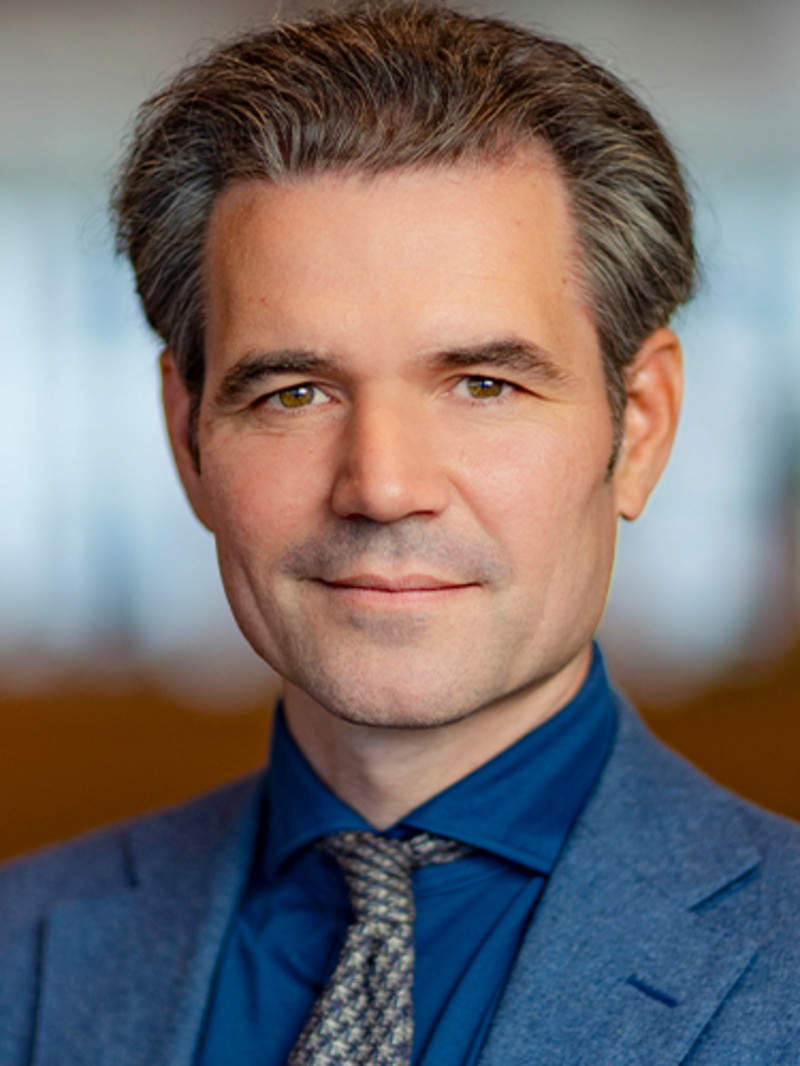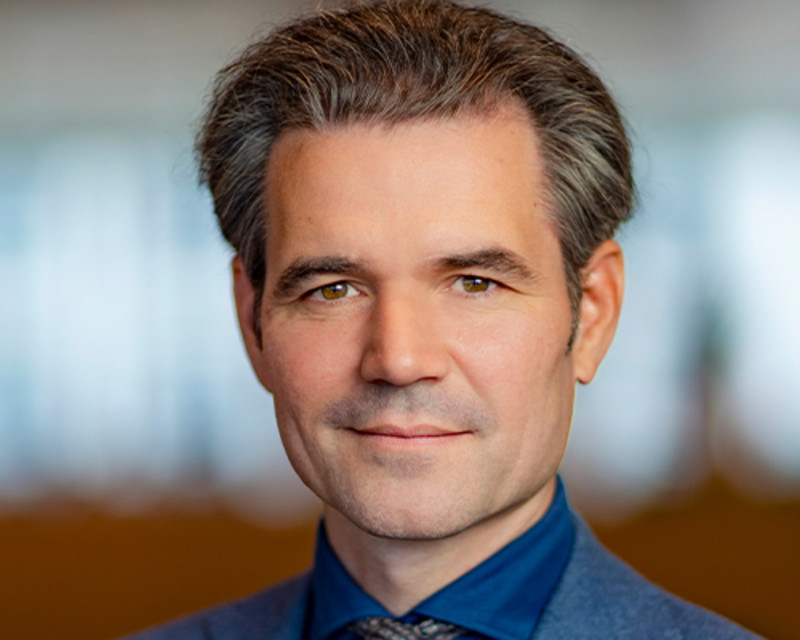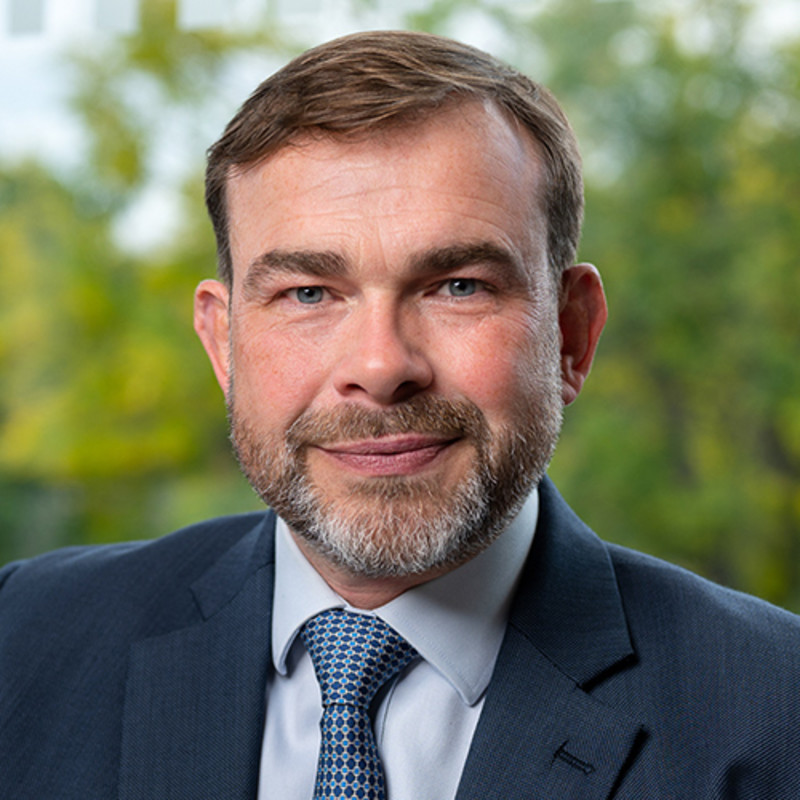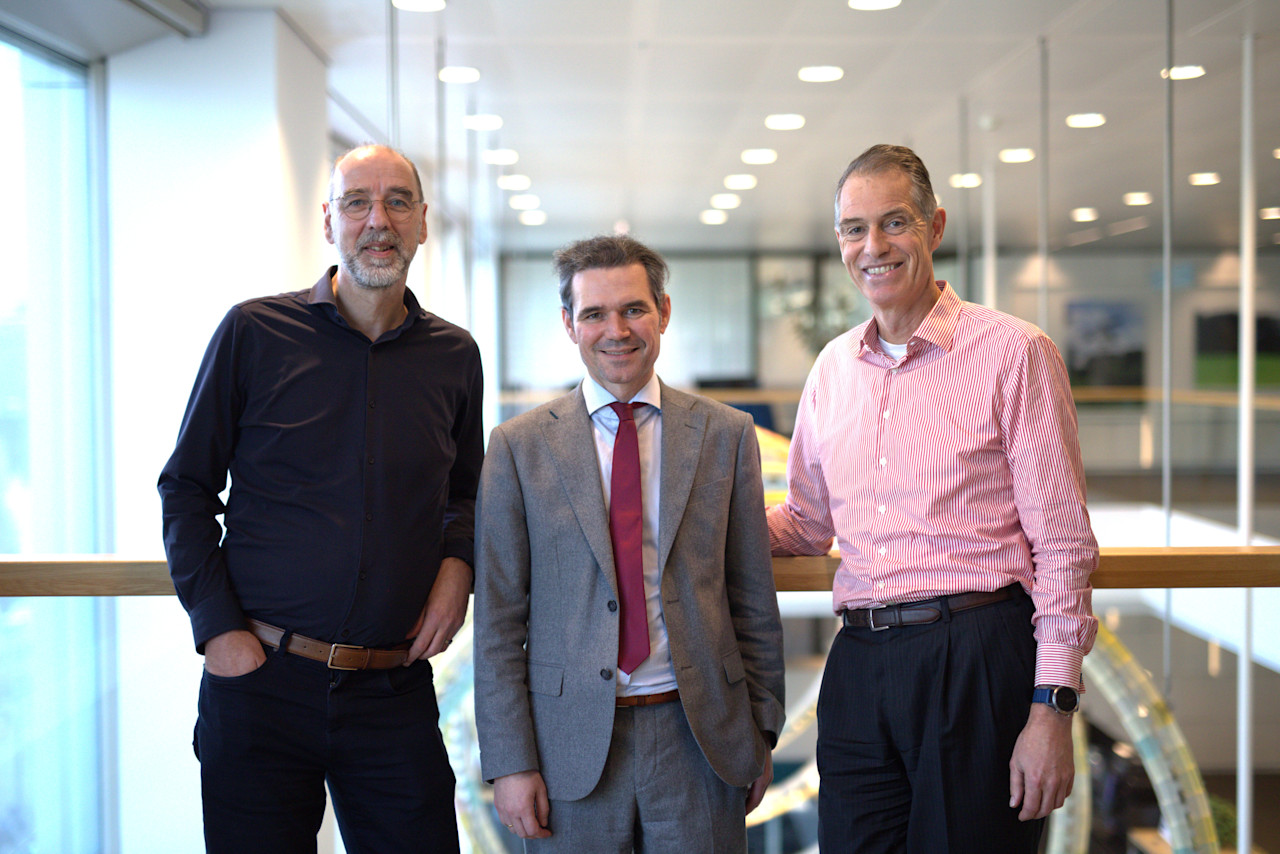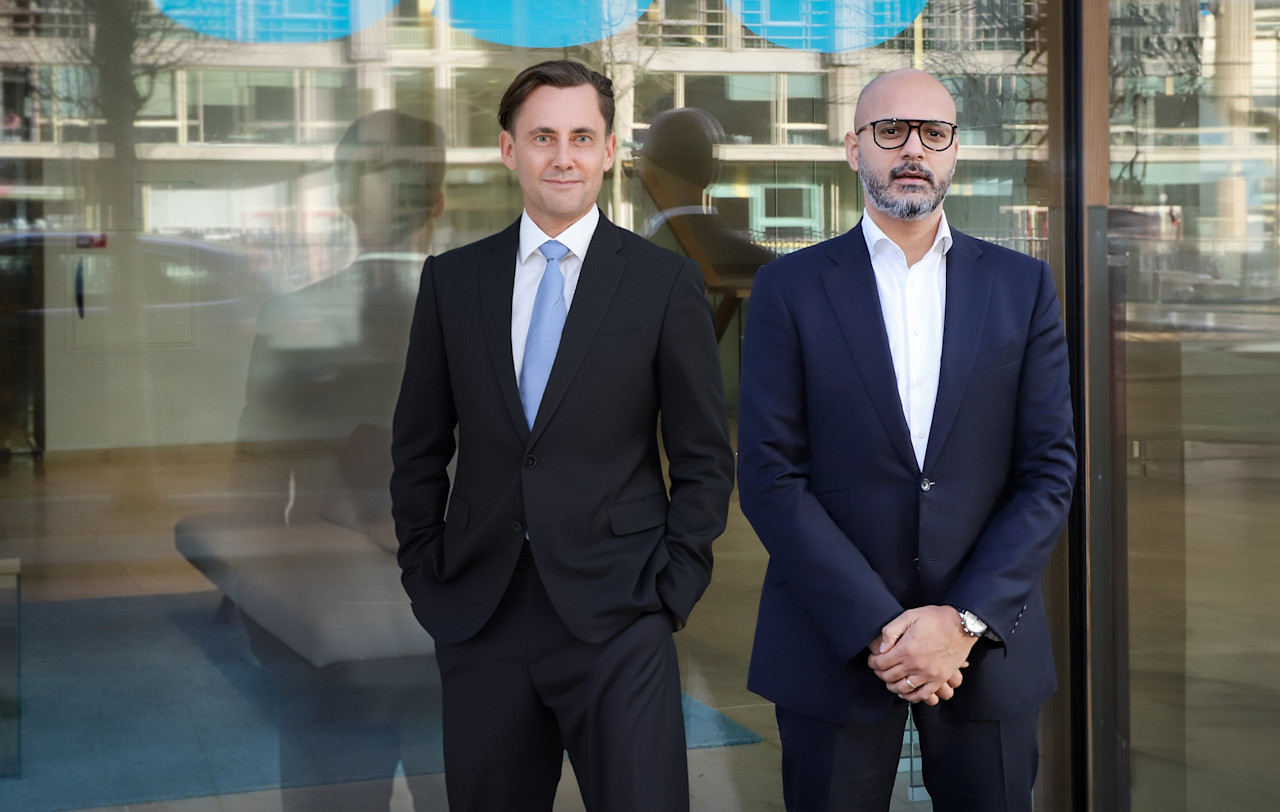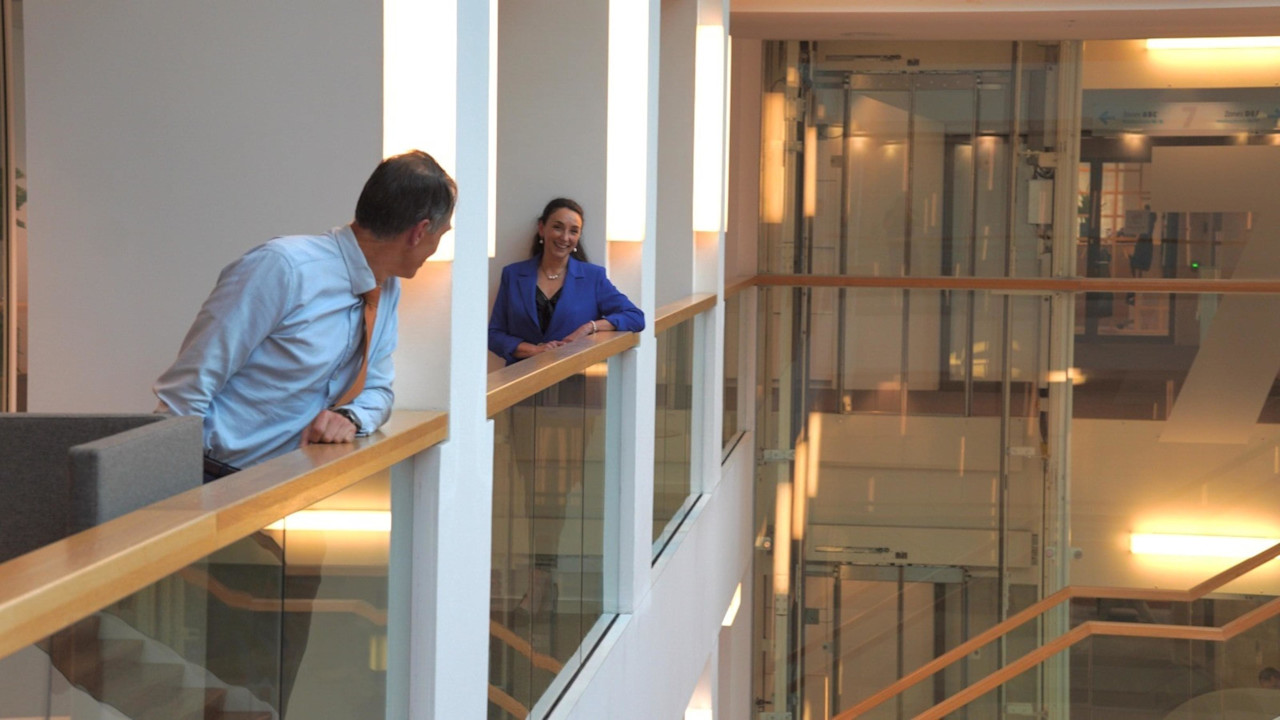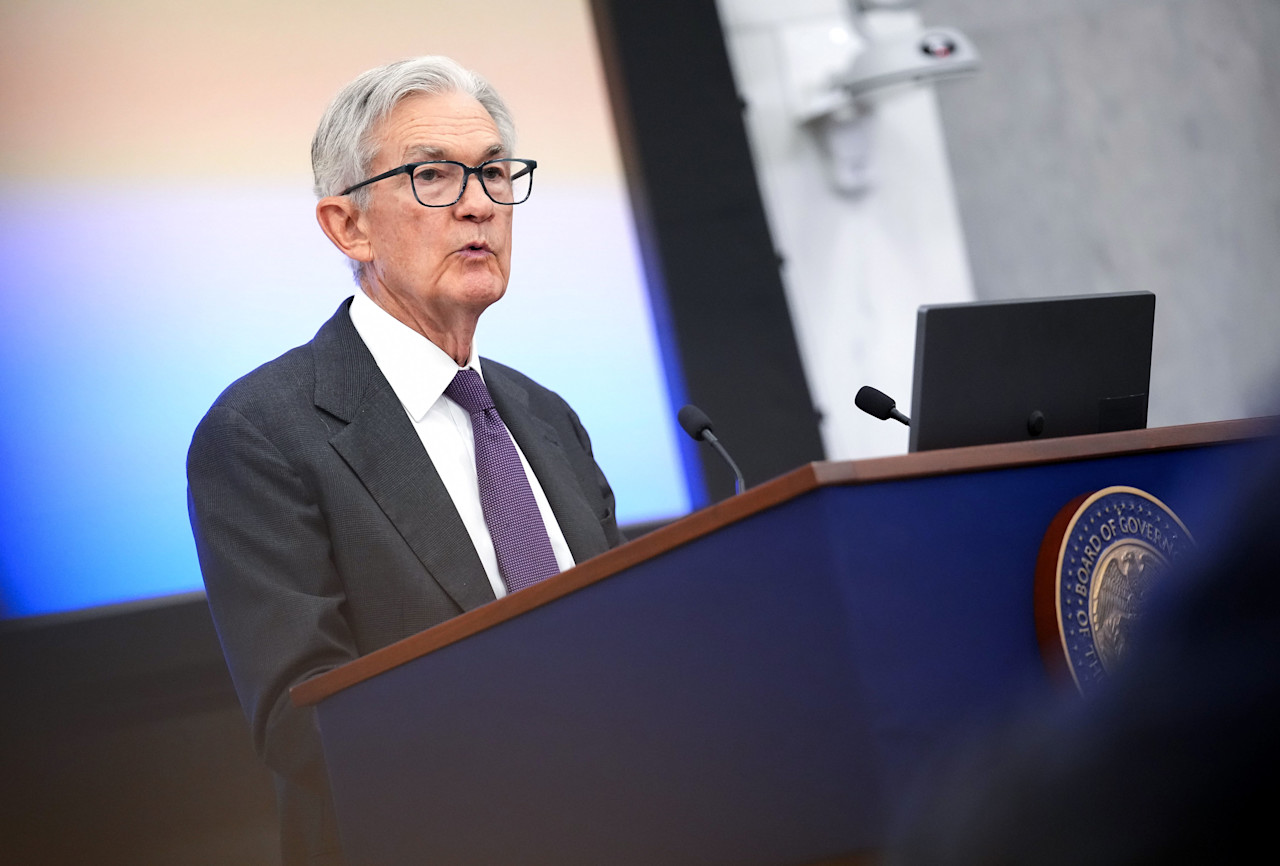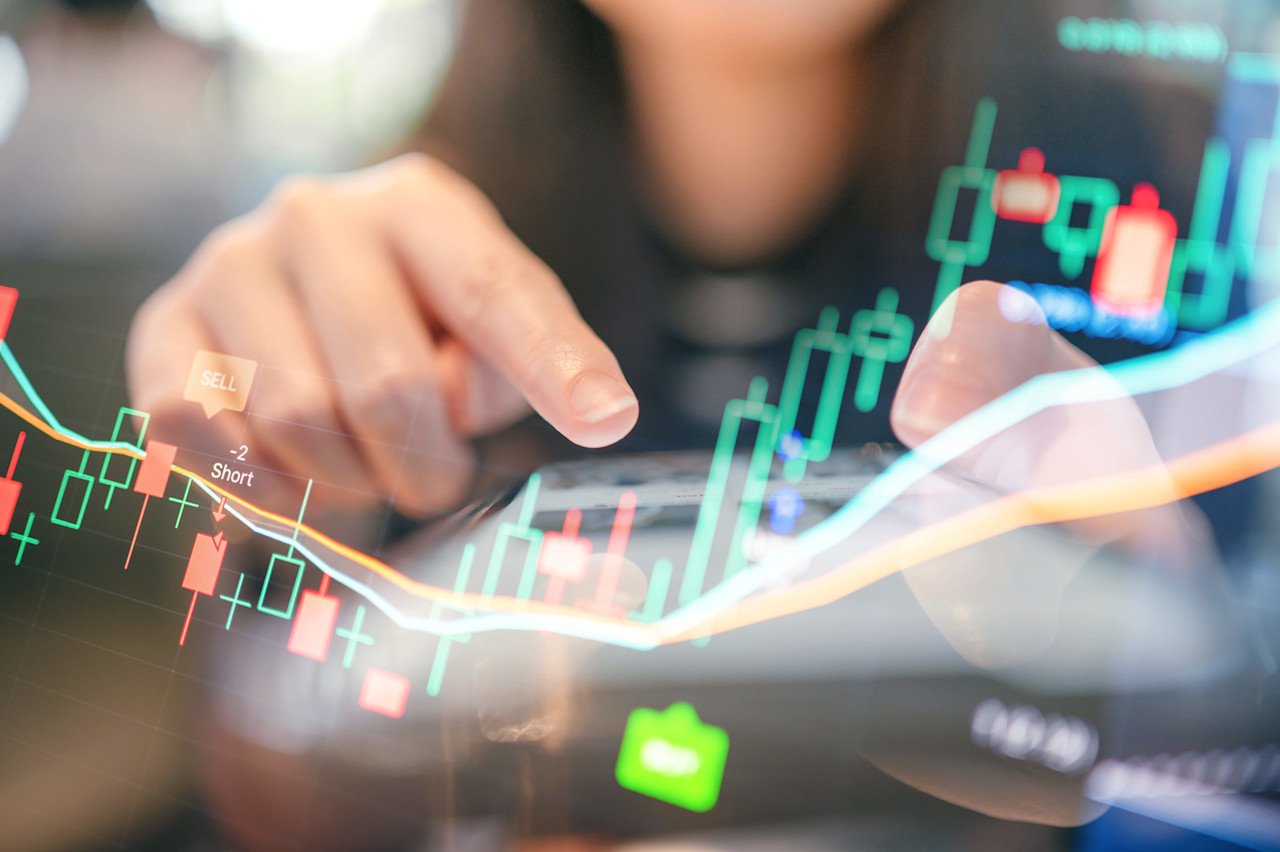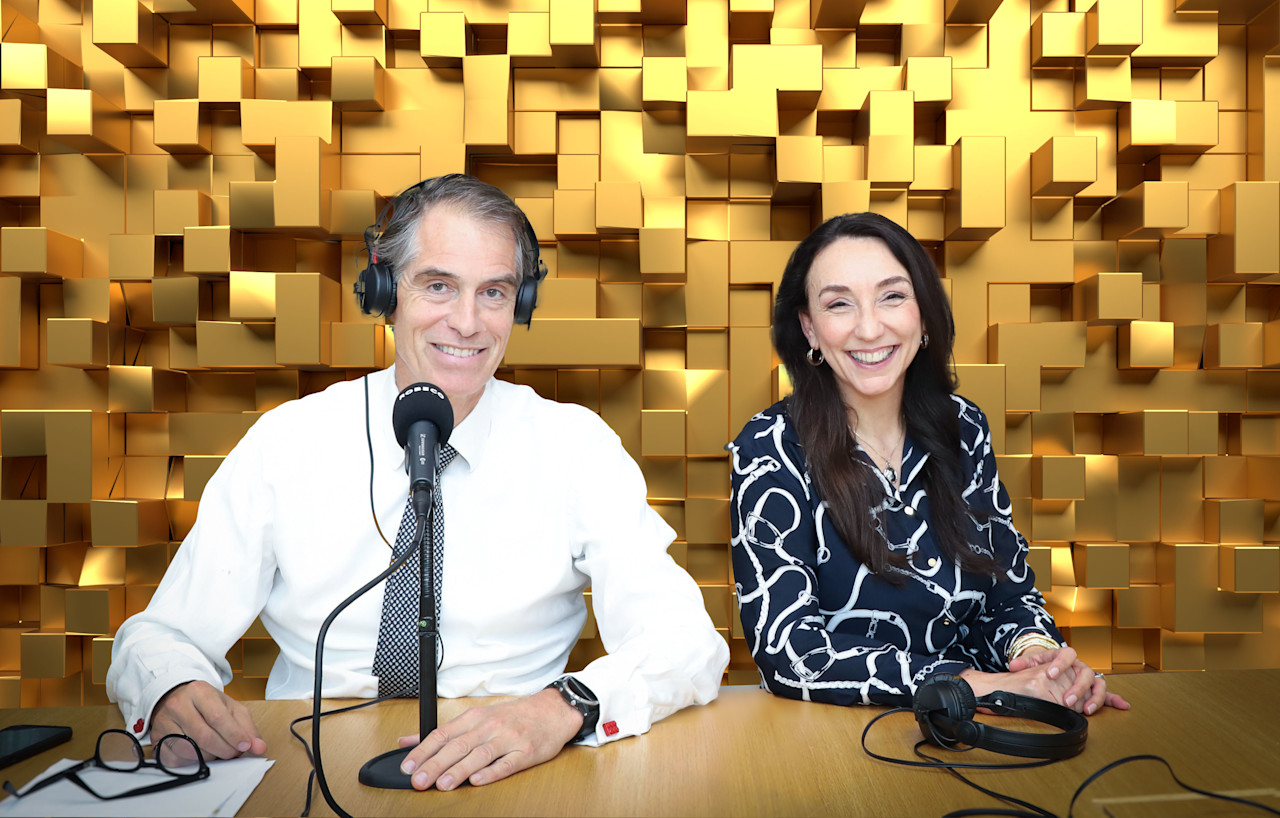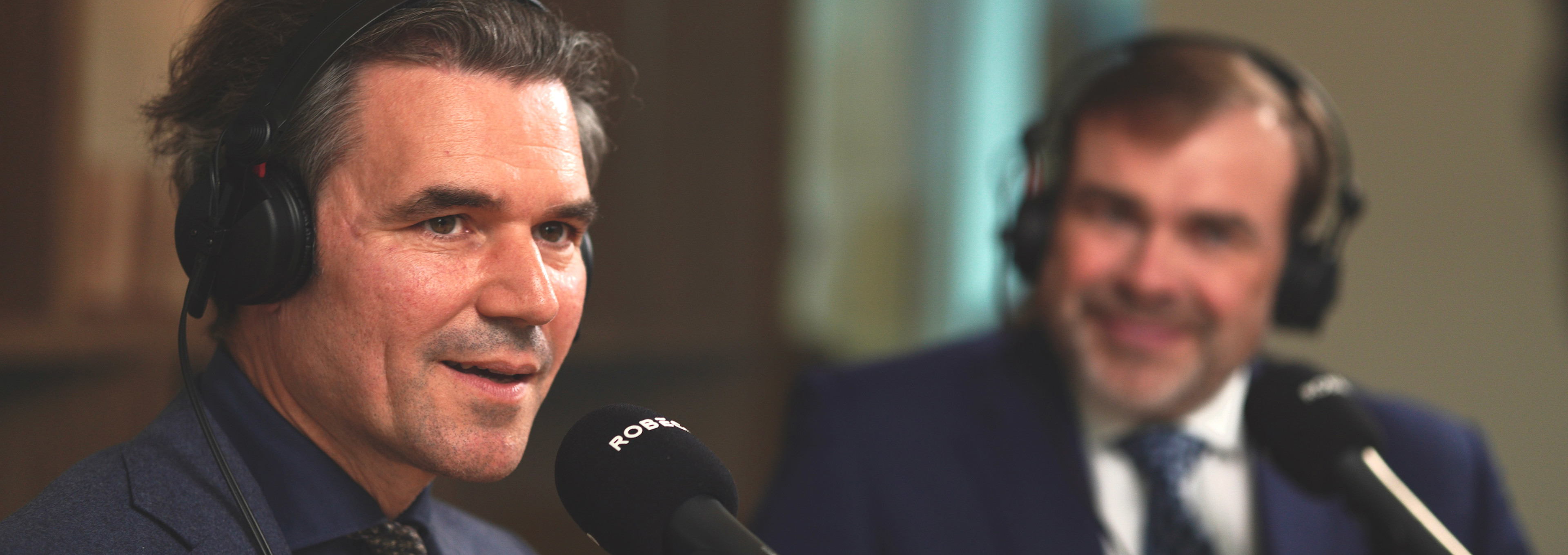

Podcast: 5-year Expected Returns – The Stale Renaissance
Exciting AI developments and technological innovation meet macroeconomic and geopolitical headwinds. Global economic growth will keep momentum, but it may be somewhat subdued in the next five years.
Tune in to our podcast with strategist Peter van der Welle and co-head of Investment Solutions, Colin Graham where they discuss the prospects for various asset classes and dig deeper into the findings of this 135-page report.
分析用およびマーケティング・クッキーの利用に同意していない場合、この動画はご利用いただけません。クッキーの利用に同意することにより、すべてのコンテンツの視聴が可能になります。
Transcript
This podcast is for professional investors only.
Peter van Kleef (PvK): Welcome to the monthly Robeco Investment podcast. I'm Peter Van Kleef and today we have a very special edition. It's the launch of our 5-year Expected Returns titled ‘The Stale Renaissance’. Now in its 15th year, this publication is one of our most valued outlooks guiding clients across the globe. Joining me are Strategist Peter van der Welle, one of the authors of the document and Colin Graham, Co-Head of Investment Solutions. Welcome gentlemen.
This year marks the 15th edition of our Robeco annual Expected Returns publication covering the outlook for the next five years up to and including 2030. You've developed this outlook in a world where we've seen AI innovation at the speed of light. But on the other hand rising uncertainty from tariffs, political, geopolitical turmoil, tensions. Has this year's edition been more complex to create than previous ones? Peter.
Peter van der Welle (PvdW): Yeah I wouldn't say so, that it's more complex compared to previous years. I think the level shifts in complexity occurred during the pandemic and especially also in the aftermath. What we have seen basically since 2020 is a shift, a policy regime shift away from a monetary-led to a fiscally-led regime. In addition also we have seen more frequent negative supply-side shocks. And on top of that we have seen a divergence between hard and soft data making it much more difficult to assess the economic environment.
So in 2022 we had the five-year outlook themed ‘The Age of Confusion’. And looking back at the tariff uncertainty this very spring, thanks to Trump policies, I think we have arrived in that Age of Confusion.
PvK: We’re in the midst of the Age of Confusion. That was a very prophetic title in hindsight. Talking about confusion this year's publication is titled The Stale Renaissance, which is maybe a bit confusing as well because if we think about renaissance, it has a feel of excitement and renewal, but stale sounds a bit like stagnation maybe? Can you unpack this apparent contradiction?
PvdW: Yeah. It is a quite paradoxical state of world that we envisage. And we were inspired by the Italian Renaissance where you saw great progress in art, in literature, but at the same time also great societal upheaval and turmoil. And as former Google CEO Eric Schmidt put it in a recent TEDTalk, we are also now seeing the rise of the Digital Da Vinci, with AI systems being able to do what Da Vinci could do, but they –
PvK: But better?
PvdW: Better, but they can do it better and especially faster. So that could create an abundance of ideas and innovation. At the same time, we also see that the broader environment where this innovation will take place looks more stale upon closer inspection. So we expect US exceptionalism to fade a bit in the next five years due to the fact that current policies are inconsistent and self-defeating.
I think about the weaponization of tariffs, constraining migration and also outside the US, the rise in populism. So we have a special paragraph about the implications, economic implications of the rise in populism. And there we find that a populist leader typically sees 60 basis points lower growth in the subsequent five years after taking power, compared to a non-populist leader. So that's a cyclical headwind that we are facing, even as we do expect that AI and innovation in AI will create a rebound in productivity growth.
PvK: So we still see growth momentum but it's facing severe headwinds. That's what you're basically saying right?
PvdW: Yep.
Colin Graham (CG): And one other thing I would add to this is that we don't know if this is a Da Vinci moment, because we're just doing things faster than we're already doing. If it's a true Da Vinci moment, then it would be something, a step change in the evolution. So that's why we're sort of a little bit hesitant to call it the renaissance and why we need the caveat around that.
PvK: Yeah. So let's move to the heart of the publication. The famous table with all the predicted returns for the major asset classes. First thing you look at is equity. Developed market equity. Emerging market equity. Emerging markets equity, you now predict 7.5% return. Developed market 6.0%, which is a significant gap. You seem to have turned more positive on emerging markets and less on developed markets, both in equity and fixed income. Can you elaborate a bit on that? Explain it a bit.
PvdW: Yeah. So last year in euros the gap was 75 basis points. That has now doubled to 150 basis points. I think after almost or more than a decade of underperformance, we are now close to a troughing process of emerging market equities versus developed counterparts.
PvK: Although we have thought that before, I guess, we as investors.
PvdW: Yeah it's the perennial question because when you look indeed at forward earnings estimates, they are always more optimistic compared to the developed counterparts in EM and then it does not materialize. But I would point out that there are a couple of factors that are really looking more promising. The fact that the Chinese housing market cycle is starting to decelerate less in terms of year-over-year contractions in prices.
So we are close to a bottoming out process, at least that that's likely to happen in the next couple of years. And then we also see that central banks in emerging market countries have more leeway to cut, because we do expect that inflation remains relatively well behaved compared to developed markets where we are facing sticky inflation between 2.5 and 3% in the next five years.
And also, there could be a nascent recovery in global manufacturing. And EMs are more tilted towards manufacturing, so that could also benefit EM relative to DM. And then also – and I think that's maybe the most promising development – a depreciation of the dollar as we envisage to unfold in the next five years.
PvK: Before maybe Colin you can respond on the depreciation of the dollar. The housing market bottoming out of the housing market in China. Does that mean more consumer spending in the future? Is that the point or is there –?
PvdW: Yes, indeed. So there's a very strong correlation between house price year-over-year developments in China and subsequent consumption on behalf of the Chinese consumer. Around 70% correlation. So whenever we do see a pickup in house prices in China, positive price developments, I think you will see a frontloading of domestic consumption in China.
PvK: Colin, you want to comment on the weakening dollar? I think that's an important point Peter made.
CG: Yes. That's a condition required for emerging market countries to cut interest rates, and that's one of the reasons they haven't been able to cut interest rates. And why the perennial question about why emerging markets underperform continues, even though we've been very positive on emerging markets.
And again, valuations don't tell you everything and you need catalysts in order to close these valuation gaps. We focus on these catalysts in this publication Peter has articulated what those catalysts are. And our readers can have a look at those and see which ones they agree with and which ones they disagree with.
But just going back to the idea of the path of the US dollar, Secretary Bessent articulated the US policy on the dollar. Firstly, they want a dollar that everyone will continue to use as a medium of exchange, but they want it at a lower price. And what this means is that growth and dollar liquidity in the rest of the world will increase. This will help value stocks. But we also think this will help emerging market assets. And from that perspective then that is a trigger that we see will close the valuation gap here. You have to remember that EM markets are much more smaller even than debt markets, equity markets, other markets like gold and commodities: much, much smaller than the huge US asset base. So you just get a small change in the flows, not even flows going to the US but redirected –
PvK: Which can lead to very strong reactions.
CG: Yes, we've already seen it in Korea, we've seen it in China, we've seen it in gold. So, you know, these are the types of assets and these are the opportunities that we're trying to capture for our clients when we're investing like this.
PvK: We will come back to the dollar in a bit later stage. Also talking about the safe haven status of the dollar, which has been there for decades and is now under siege. Before we go there, I want to go back to this publication. So this is a huge publication, 135 plus pages, I think. Why do we create such an extensive publication?
How should institutional investors, which is the key audience, how should they read it? How should they use it? How should they look at the table with predicted returns? And to complicate it even more, maybe, you also have a base case scenario of what's going to happen in the next five years. A bear case in the bull case. How do you balance those three?
CG: Yes. So from our perspective, when we talk to our clients about this, they might have a pensions board that they have to present to about what their outlook is. So we see our forecast being incorporated in that. But fundamentally we believe that static benchmarks are inefficient.
If you had a 50-year time horizon, great. Just set your allocation, strategic asset allocation. Leave it, put it in a box, come back 50 years, pick it up. But we know that's not the way the world works. So what this does is allow and inform our institutional investors and our retail investors of where we are in the cycle. So how should we adjust these long-term assumptions for where we are today? And that's what makes it such an extensive publication because we have to cover all the angles.
PvK: Peter, do you want to comment on that as well? You're the main author, right, spending all your summer working on it.
PvdW: Well, the latter is definitely true. We indeed have to cover a lot of fields in this publication. So as we hinted already, the world is growing ever more complex and especially, I think, the fact that we are confronted by more negative supply-side shocks. For an economist and also for a strategist, it's very difficult to assess the lead-lag relationships between those shocks.
How will they impact and which what is the proper time horizon where that impacts will materialize in expected returns? It's not a world where you can just write down your mode of view and go off to the beaches and have some relaxation. No, you really have to think about the tail risks, because the tail risks in the world of the next five years are much more pronounced than, let's say, 10, 15 years ago. That's really something that that requires also a very decent framework.
CG: And you need to apply that framework. And as Peter says, that the framework changes. Well, the framework stays the same, but the markets change on a daily basis. So we look at this year we had irrational exuberance, we had a recession –
PvK: We had it all this year.
CG: – and now we're back to rational exuberance again. So yeah, our framework hasn't changed. But what that allows our clients to do is think about what's priced in. Are these tail risks overpriced or underpriced? And one person's risk is another person's opportunity. And therefore that's what we're trying to identify for clients so that they can make money from these market movements.
PvK: So, Colin, you talked about how clients could or should use this publication, right? You're a multi-asset investor yourself. So how do you use it on a daily basis? Also, in all the volatility we've seen over the course of this year.
CG: So the first thing we do is we look at what the efficient frontier is. So the trade-off between risk and return. And we see how that's changed over the year. And this year we can see that the overall level of expected returns has come down, but there's been a slight twist with it coming down faster for government bonds and investment grade, and less so for emerging markets. Debt equities also developed market equities as well. So we will take that those numbers and say okay, if we have this risk profile, we will generate the asset mix that will get that risk profile.
But we'll also look at from a return perspective. So we have a the purest form of using this is thinking, okay if I have cash today, what assets should I invest in over the next five years that they're going to generate my cash plus three or cash plus four return? So more than you get at the bank.
That's the purest form in which we use this and against things like benchmarks and strategic asset allocations, we give advice about how you want to tilt those assets. And we also use it as idea generation. So therefore we follow what the pricing of these various ideas are in the market. And when they become too expensive or too cheap, then that's when we will then implement –
PvK: When you act.
CG: Yes, exactly.
PvK: So Peter, let's talk a bit about methodology. You've got this table with the predicted performance, predicted returns. I'm assuming there's a model behind it. There's variables that you put in, but what exactly is under the hood? Can you just very concisely, briefly give us a bit of a sneak preview on what's driving the model?
PvdW: There's a lot of fine engineering under the bonnet.
PvK: You make it sound like a Formula One racing car.
PvdW: I think that that's a good analogy because if you want to go out on the racetrack, you have to assess the weather conditions. And they can be highly variable, and likewise also the economic trajectory is sometimes quite, quite unpredictable and treacherous. So your engine or your economic framework need to be very adaptable to those varying circumstances. So what we tend to do is look at a steady state and then look at how the future, the next five years, might differ compared to that steady state.
PvK: And steady state is like the historical performance of assets over the past 100 years?
PvdW: Yes, indeed. So we have large databases looking at those long-term time series of realized returns. That's really the backbone. And also by looking at those empirical track records, you try to circumvent base rates and neglect. So that's a behavioral bias of just extrapolating the latest headlines and by looking at the steady states, starting by the steady state, you have an unconditional view of what could happen.
PvK: And what are the key variables that you put in the model? Maybe the three key variables.
PvdW: So the key variables are the economic growth projections for the large regions and the inflation. And derived from that, you can estimate default rates, which is an input for your high yield asset pricing model. So these major parameter values go then into asset pricing models. And then the outcome of those asset pricing models is reconciled with an valuation angle. So we also have expected returns implied by ex-ante valuation levels. And then we assess are those returns comparable with the estimates from our asset pricing models.
PvK: So it's historical returns and you add to it a valuation tilt, if you wish growth macro tilt, and also climate I think, right?
PvdW: Yes, indeed. So we have three tilts the macro tilt, the climate tilt and the valuation tilt. So three adjustments of how the next five years might differ compared to what has happened most often in history.
CG: Looking at other sort of medium-term asset allocation models that I've seen and worked on before, then sometimes they use a reversion to mean as their forward expected returns. And that's not what we do. So we do something different. We build it from the bottom up in terms of what do we think the returns are going to be for the asset classes over the next five years.
PvdW: Yeah, we're really looking for catalysts, which could trigger that reversion to the mean, and also where you could see not just a major reversion to the mean, but an under or an overshoot. And there your macro framework is really informative.
PvK: And once the model has generated all the outcomes, in a multi-asset boutique or multi-asset company, as Robeco is, do you get challenged by, let's say, the equity team or the fixed income team who might disagree with your view?
PvdW: Yeah, sure. And we love to get challenged. So what I tend to do is ask the portfolio managers for their ballpark estimate before I let them know what we have in mind, what the outcome is of the model exercise. And quite often I get then an expected return that is above our initial estimates. So that could convey.
PvK: That makes sense.
PvdW: So there's literature about optimism bias among portfolio managers. That might indeed be the case in some cases. But at the same time, I'm also often surprised how close those estimates still are. They have an upward tilt compared to our initial estimates –
PvK: But they are not far off.
PvdW: No they are far off. They are not discounting an entirely different state of world compared to the plausible states of worlds that we envisage. So it's always a good exercise and it's always good to have your views challenged by someone who also has the bottom-up view.
CG: We notice that when we look at the information from specific asset classes, you can get different scenarios priced into equities, bonds, currencies, commodities, volatility. When we look at that and we compare those then that also gives us information. Because again there is this segmentation of information in the market where equity people only focus on equities. And this is particularly important and obvious when you talk currencies.
So you talk to a fixed income manager. They say, oh we don't – we hedge all our currencies. We're not worried about it. We say, well doesn't that affect your rates? Doesn't that affect this? And so we have that questioning and we talk to them about that. You go to the equity [team] and they say well we don't care about earnings and say well if the dollar goes down 20% then your pharma stocks are going to lose out in earnings. So why aren't you concerned about that? So again here it's a two-way challenge when we're talking to the underlying teams. We don't know the underlying stocks. But we can talk to them about the macro factors that might affect them that they don't necessarily focus on on a day-to-day basis.
PvK: So I want to briefly go back to the scenarios you mentioned. So you have this base case, but you also have a bull case and a bear case. Given the volatility and the amount of uncertainty in the markets that we see this year, has that led to a lower probability rate for the base case scenario?
PvdW: The probability for the base case is still 50% like last year. But what has changed is the distribution in the probability between the bull and the bear case. So we have lowered our bull case and raised the odds of our bear case.
PvK: Operating on the more cautious side.
PvdW: Yeah. I think, compared to the base case, risks are now more tilted to the downside of that base case materializing. So the odds of a stagflationary world have increased.
CG: So what this is saying is that a lot of the elements of the bull case are already priced in the market, and that's how we view it. So therefore, there is more chance of things going wrong than going further, higher than they are today. So that that's the skew that we think about that and we change the probabilities based on how the signals change. And that's why the document is 140 pages because we are assessing what those signals are. That would change our views through the years. So did we really do anything in April? Not really, because nothing really changed.
PvK: So a lot happened, but nothing changed.
CG: Exactly.
PvdW: And to Colin’s point, if you look, for instance, at the cyclically adjusted price earnings ratio in the US, the implied economic growth for the next five years of that very metric is 2.9%. Now, we do have a 3% real GDP growth forecast for the US in the bull case. So the bull case is indeed almost fully priced. So the risks also are skewed to the downside.
PvK: This publication also covers four special topics. One of them is on AI helping to uncover small-cap stocks. One of them is on a liquid alternative for private equity. One of them is on how we face the headwinds in sustainable investing. And the fourth one is the one that made the most headlines. It's about the safe haven status of the US dollar or the US treasuries. What's happening there? Can you elaborate a bit on that one?
PvdW: Yeah. What is interesting is that when Trump announced the tariffs, universal tariffs on Liberation Day, in the aftermath in the subsequent week, you did see a decline in the dollar, which is quite unusual in equity markets.
PvK: That’s exactly the moment that you feel like the dollar should go up, right?
PvdW: Yes. Historically in these kinds of environments, the dollar has appreciated. And now it's declined by 3.9% between April 2nd and April 10th. At the same time, we also saw that the correlation between US Treasury returns and gold turned negative. And that's also quite unusual. So that could hint that investors are reassessing or starting to reassess the status of the US as a safe haven.
PvK: And start looking for other safe havens of course.
PvdW: Well, yeah.
CG: Yeah. But there is none. If we think about it from this, and this is why the declining dollar is not going to be a straight line because there will be safe haven status still attached to that. But if you look at other currencies that could step up, they all have their flaws. So while the system is plugged into the dollar, it will be very difficult to change that overnight. But over a five-year time horizon, then you could see that shift happening over that period.
PvdW: Yeah. So you could see a decline in foreign treasury holdings by a couple of percentage points over the next five years. I think that's quite likely. And on the back of that, that the weakening of the dollar that actually is preferred by Treasury Secretary Bessent.
CG: And the exorbitant privilege around the dollar has helped the US keep their borrowing rates low. So again, this becomes self-fulfilling if you ever jump across that Rubicon into questioning whether the US assets, the US dollar is the ultimate safe haven.
PvK: Thank you Peter. Thank you Colin, and thank you for tuning in. Please make sure you check the Robeco website for more exciting content on the 5-year Expected Returns. If you've enjoyed the discussion, please do subscribe and share the link with your network. This podcast is available on our website and all major podcast platforms. Stay tuned for more Robeco investment podcasts.
Thanks for joining this Robeco podcast. Please tune in next time as well. Important information: this publication is intended for professional investors. The podcast was brought to you by Robeco and in the US by Robeco Institutional Asset Management US Inc., a Delaware Corporation, as well as an investment advisor registered with the US Securities and Exchange Commission. Robeco Institutional Asset Management US is a wholly owned subsidiary of ORIX Corporation Europe N.V., a Dutch investment management firm located in Rotterdam, the Netherlands. Robeco Institutional Asset Management B.V. has a license as manager of UCITS and AIFs for the Netherlands Authority for the Financial Markets in Amsterdam.

Expected Returns 2026 - 2030
Available on


Tune in now – Robeco podcasts
重要事項
当資料は情報提供を目的として、Robeco Institutional Asset Management B.V.が作成した英文資料、もしくはその英文資料をロベコ・ジャパン株式会社が翻訳したものです。資料中の個別の金融商品の売買の勧誘や推奨等を目的とするものではありません。記載された情報は十分信頼できるものであると考えておりますが、その正確性、完全性を保証するものではありません。意見や見通しはあくまで作成日における弊社の判断に基づくものであり、今後予告なしに変更されることがあります。運用状況、市場動向、意見等は、過去の一時点あるいは過去の一定期間についてのものであり、過去の実績は将来の運用成果を保証または示唆するものではありません。また、記載された投資方針・戦略等は全ての投資家の皆様に適合するとは限りません。当資料は法律、税務、会計面での助言の提供を意図するものではありません。 ご契約に際しては、必要に応じ専門家にご相談の上、最終的なご判断はお客様ご自身でなさるようお願い致します。 運用を行う資産の評価額は、組入有価証券等の価格、金融市場の相場や金利等の変動、及び組入有価証券の発行体の財務状況による信用力等の影響を受けて変動します。また、外貨建資産に投資する場合は為替変動の影響も受けます。運用によって生じた損益は、全て投資家の皆様に帰属します。したがって投資元本や一定の運用成果が保証されているものではなく、投資元本を上回る損失を被ることがあります。弊社が行う金融商品取引業に係る手数料または報酬は、締結される契約の種類や契約資産額により異なるため、当資料において記載せず別途ご提示させて頂く場合があります。具体的な手数料または報酬の金額・計算方法につきましては弊社担当者へお問合せください。 当資料及び記載されている情報、商品に関する権利は弊社に帰属します。したがって、弊社の書面による同意なくしてその全部もしくは一部を複製またはその他の方法で配布することはご遠慮ください。 商号等: ロベコ・ジャパン株式会社 金融商品取引業者 関東財務局長(金商)第2780号 加入協会: 一般社団法人 日本投資顧問業協会




